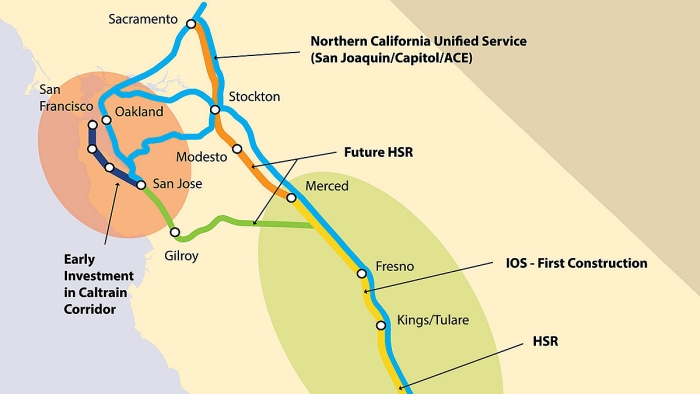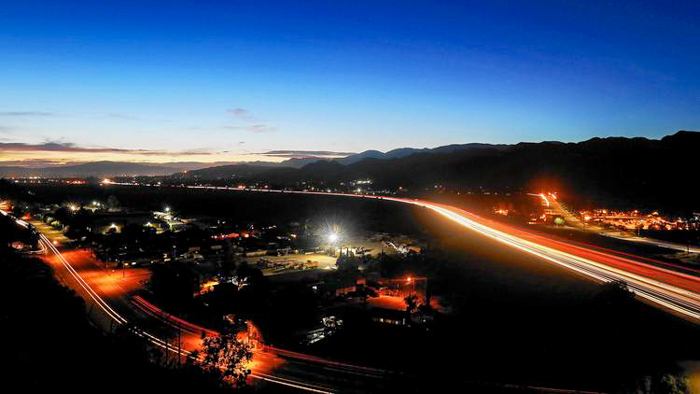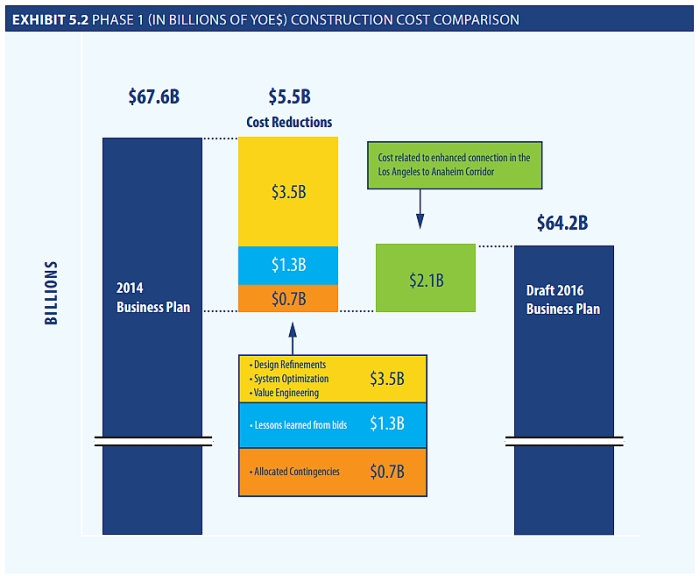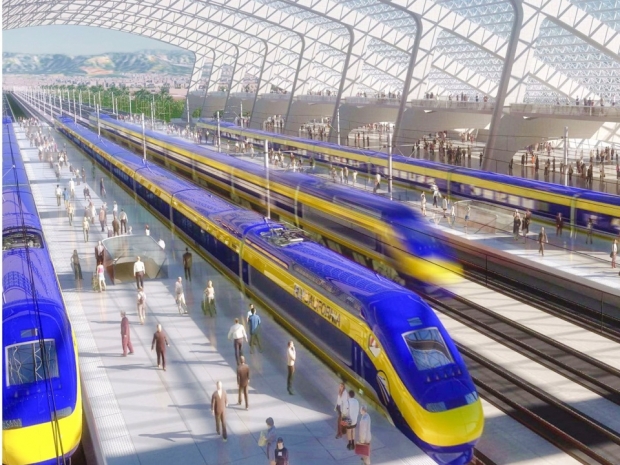If the project is ever completed, the California High Speed Rail will connect San Francisco and Los Angeles with a one-seat, 220mph (350km/h) top speed train ride spanning 800 miles (1300km) of tracks across 24 passenger stations. This is Phase 1 of the project. Phase 2, which has yet to receive a timetable, will connect northwards from the Central Valley to Sacramento, and southwards from Orange County to San Diego.
The California High Speed Rail Authority’s original plan was to build a segment connecting the Central Valley to LA’s Union Station in the southland, traversing the rocky Tehachapi and San Gabriel mountains just north of Los Angeles. The main difficulty to the plan’s original target completion date, however, are the geographically complex crossings of Southern California’s mountains. This is an area that would require digging 36 miles of deep tunnels, laying 300 miles of track, and building six stations and high-voltage systems along the earthquake-prone route. The Los Angeles Times accurately predicted in an October 2015 analysis that this plan would not be completed by 2022 within the then-projected $68 billion budget.
Instead, officials will now begin construction on a northern segment connecting Northern California and the Central Valley in order to begin receiving revenue on the now-$63.4 billion project as soon as possible.
The high-speed rail authority’s Draft 2016 Business Plan describes how state officials intend to build a line connecting northern California to the Central Valley by 2024 with a goal of offering passenger service by 2025. They have concluded that this is the best way to begin sequencing of the larger Phase 1 system. “By building a line connecting northern California to the Central Valley – commencing service and starting to generate revenue – we will be in a position to attract private investment and unlock additional capital to help move the rest of the system forward.”
Image source: Los Angeles Times
The revised draft, published February 19, 2016, has now pushed the plan three years behind schedule to 2025, as it was originally thought this could be accomplished by 2022. While the mountainous passage connecting the Central Valley and Southern California will not be built until the end of schedule, the San Francisco leg of the project will be first on the completion list. The new business plan estimates the completion cost of the Silicon Valley to Central Valley line will be $20.6 billion.
Construction on the initial 29-mile section of the high-speed route in the Central Valley, from Madera to Fresno, began in 2015 and is expected to end in 2019. In 2015, The Week magazine identified the project as “the most expensive public works project in United States history in current dollars.”
Meanwhile, the high speed authority’s Draft 2016 Business Plan also cuts the price tag of the project by $4 billion, with a total price now at $64.2 billion. California Proposition 1A – the “Safe, Reliable High-Speed Passenger Train Bond Act for the 21st Century” – was passed by a 52.62 percent majority of California voters on November 4, 2008 and allocated $9.95 billion to the California High Speed Rail Authority. Of that amount, $9 billion was projected to cover core project segments along the San Francisco to Los Angeles route, while the remaining $95 million went to local railroad systems to connect local non-high speed rail locations to project stations along the route. In 2009, California was also able to secure $3.3 billion from the American Recovery and Reinvestment Act made available through federal appropriations and grants for construction of the first Phase 1 segment in the Central Valley (Merced to Bakersfield).
"If we had started with all the money in the world, this program would have probably proceeded differently," said Dan Richard, California High Speed Rail Authority chairman, in an interview. "If we did not have some of the requirements of the bond act, this program would definitely have proceeded different." The first leg, he added, "would probably have gone from L.A. to San Diego.”
The high-speed rail system has not gone into public perception without plenty of criticism over the past seven years. According to Business Insider, a recent Stanford University poll found that 53 percent of Californians would prefer the state government spend their hard-earned tax dollars on water projects to alleviate the worst drought in at least 1,200 years.
The 2016 Business Plan for the California High Speed Rail will be adopted in April and submitted by May 1, 2016.




